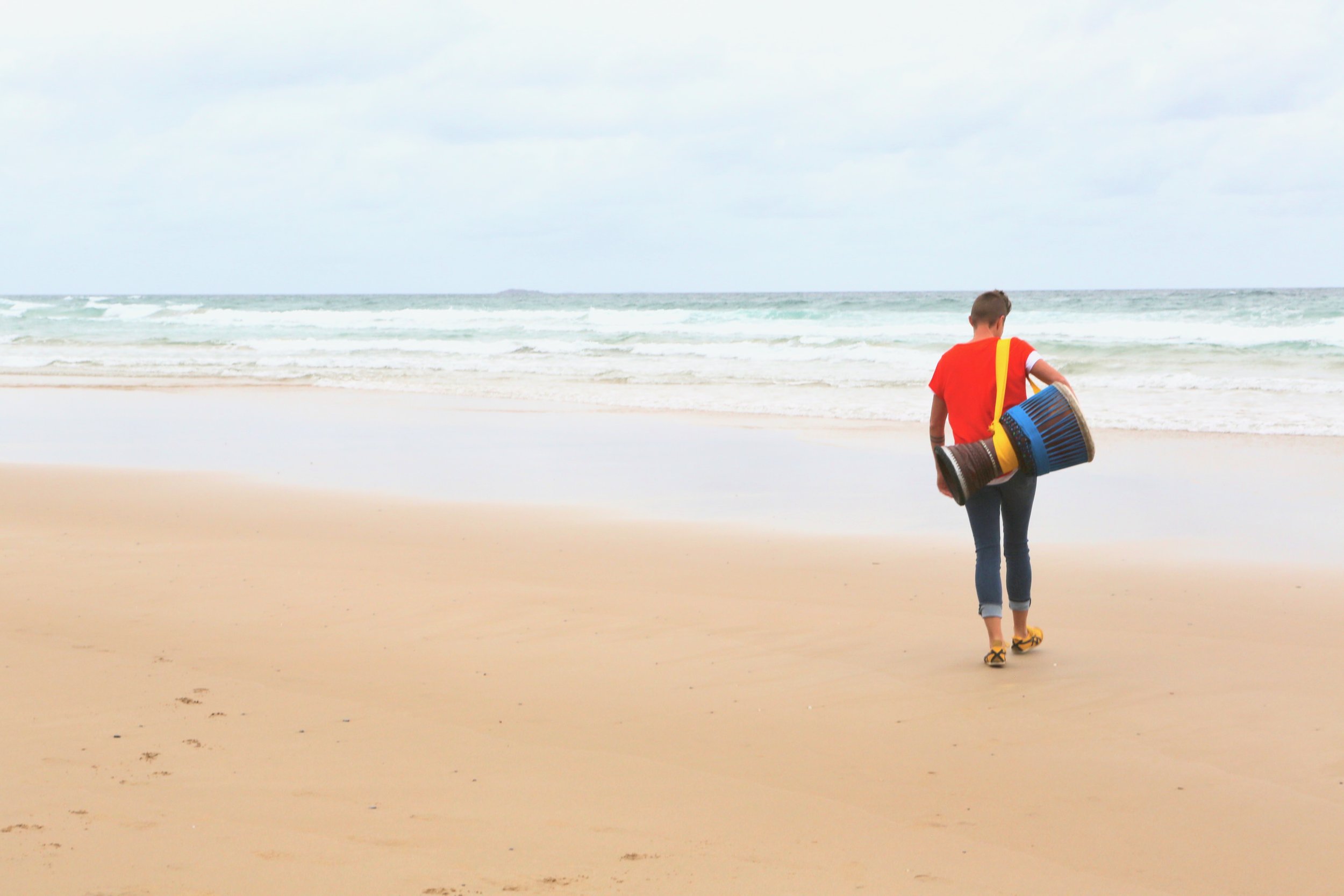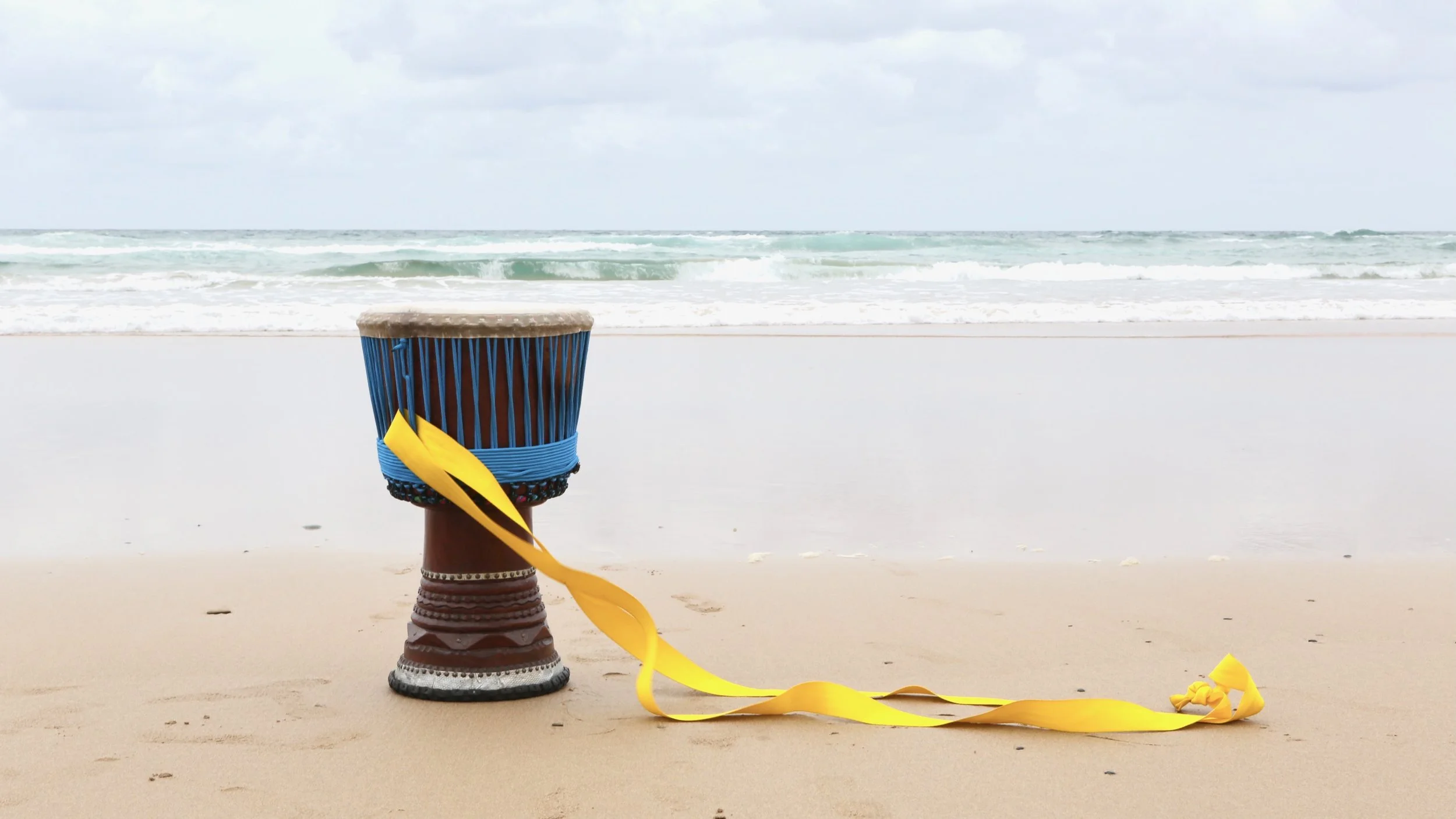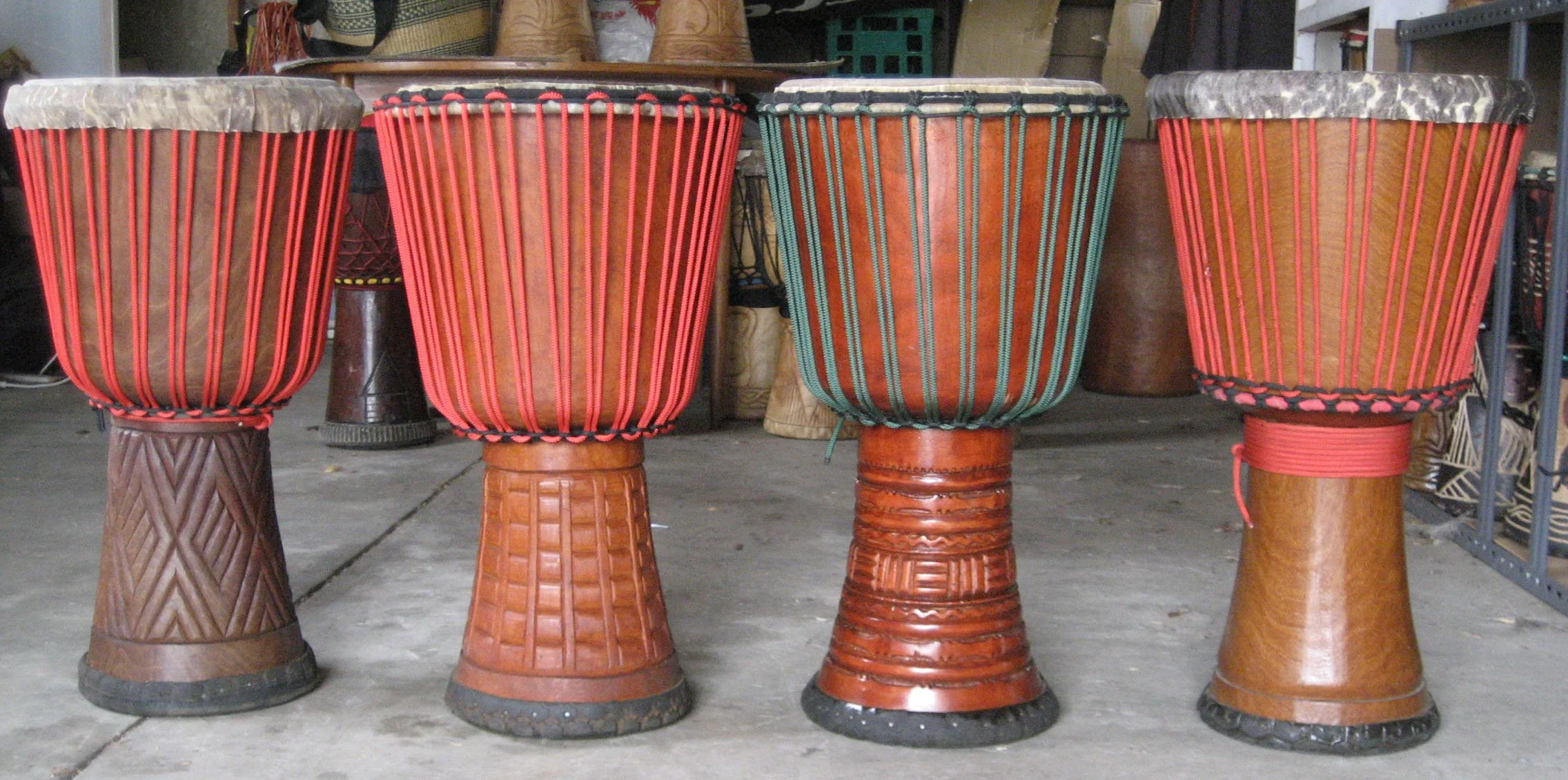
About
Drummergirl acknowledges and pays respect to the past and present Traditional Custodians and Elders of this nation and the continuation of cultural, spiritual and educational practices of Aboriginal and Torres Strait Islander peoples.
About drummergirl
It is the mission of drummergirl to continue to unite people through the action of group drumming. As Mamady Keïta insisted, the djembe does not judge - it was created with the intention of bringing people together in peace and harmony.
Drummergirl is committed to continuing to share the legacy of all the Great Master Drummers of the Mandingue tradition and do what we can to preserve traditional West African drumming rhythms.
About the Djembe
Firstly, a little simple geography.
The djembe is 800-900 years old, older than the lines drawn on maps by colonisers.
Africa is made up of 54 countries.
West Africa is made up of 16 countries, including Guinea, Mali, Sierra Leone, Ivory Coast, Burkina Faso, Senegal, and The Gambia.
West Africa was once known as the Mandingue Empire and it was in this time that the djembe was created.
Now a little history.
The djembe (the main drum we play) originally accompanied life and used for celebration, initiation, sacred occasions, work in the fields, and to bring people together. Since the independence of many West African countries from colonial rule (in the 1950&60s), the djembe was brought to the stage and the best drum and dance ensembles from West Africa travelled the globe to showcase this magical art form. Once the djembe was visible to international audiences, it became a highly-prized instrument for many hand-drummers in North America and Europe.
Since then, the popularity of the djembe and the rhythms of the Mandingue has grown exponentially and the instrument can now be found and enjoyed all over the world. There are now two types of djembe music circulating - traditional and contemporary. Out of respect to all the cultures and people from which the djembe comes, teachers and students must aim to educate themselves to know the difference.

“The djembe is an instrument that expresses joy… the djembe is universal. It speaks all languages … because all human beings respond to rhythm.”
Mamady Keïta, A Life for the Djembe
The Djembe
In West Africa the djembe is known to have three Spirits:
That of the tree from which it gets its wood.
That of the animal which gives it is skin.
That of the maker who made the drum.
In playing the djembe we give it a voice and it comes to life.
Women and drumming
Traditionally, in West Africa men do the bulk of the djembe drumming. Women however create music, singing songs and creating rhythms about what they are doing and what they are going through. Both Mamady Keïta and Famoudou Konaté say that many traditional rhythms were created by women.
Drummergirl is committed to putting a drum in the hands of anyone who wants to play and in particular those who identify as women. We strongly believe that through group drumming and connection to rhythm, women can connect more deeply to their inner strength as we pioneer the feminine future.
We will be tackling our missions until our hands and hearts can no longer drum a beat.


